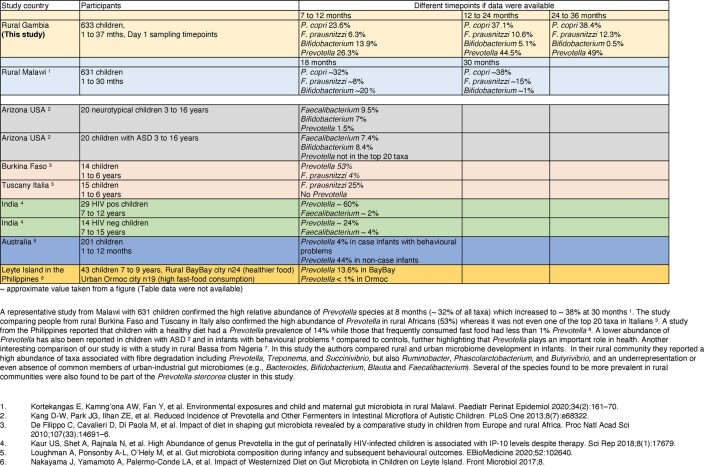Extended Data Table 3.
Selected studies with Prevotella Importance mentioned and discussed in the manuscript
A representative study from Malawi with 631 children confirmed the high relative abundance of Prevotella species at 8 months (~ 32% of all taxa) which increased to ~ 38% at 30 months3. The study comparing people from rural Burkina Faso and Tuscany in Italy also confirmed the high abundance of Prevotella in rural Africans (53%) whereas it was not even one of the top 20 taxa in Italians2. A study from the Philippines reported that children with a healthy diet had a Prevotella prevalence of 14% while those that frequently consumed fast food had less than 1% Prevotella46. A lower abundance of Prevotella has also been reported in children with ASD47 and in infants with behavioural problems48 compared to controls, further highlighting that Prevotella plays an important role in health49. Another interesting comparison of our study is with a study in rural Bassa from Nigeria7. In this study the authors compared rural and urban microbiome development in infants. In their rural community they reported a high abundance of taxa associated with fibre degradation including Prevotella, Treponema, and Succinivibrio, but also Ruminobacter, Phascolarctobacterium, and Butyrivibrio, and an underrepresentation or even absence of common members of urban-industrial gut microbiomes (for example, Bacteroides, Bifidobacterium, Blautia and Faecalibacterium). Several of the species found to be more prevalent in rural communities were also found to be part of the Prevotella stercorea cluster in this study.

